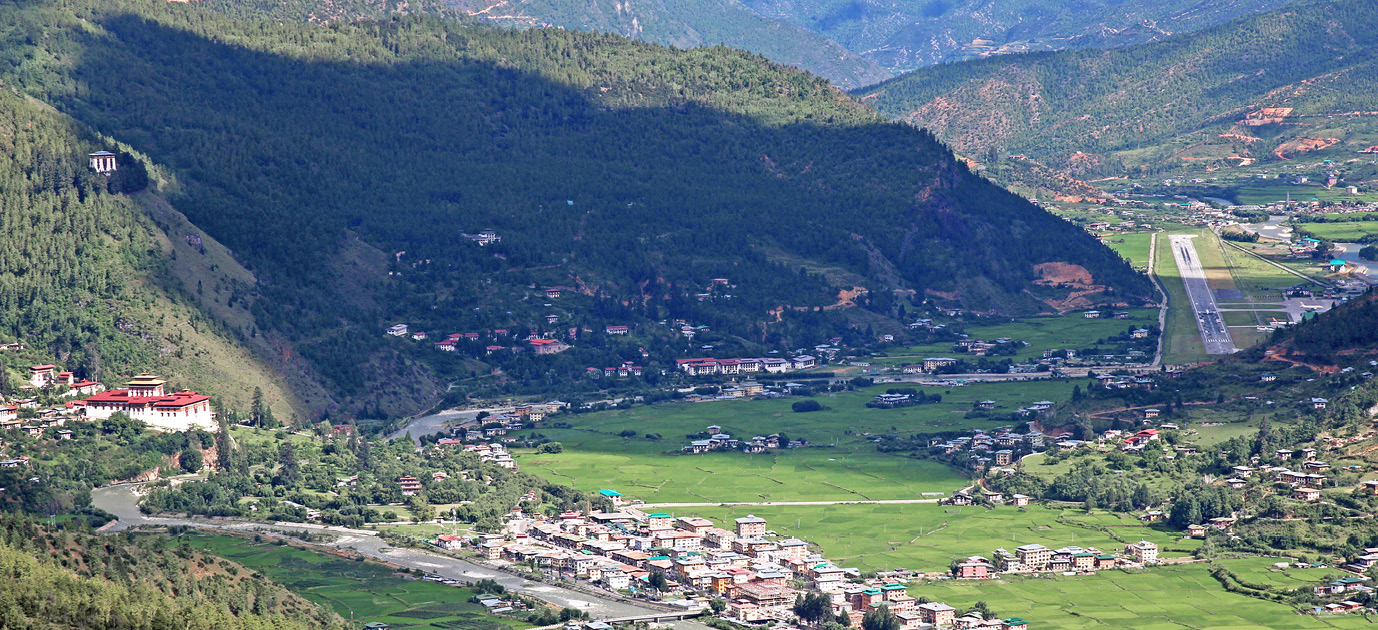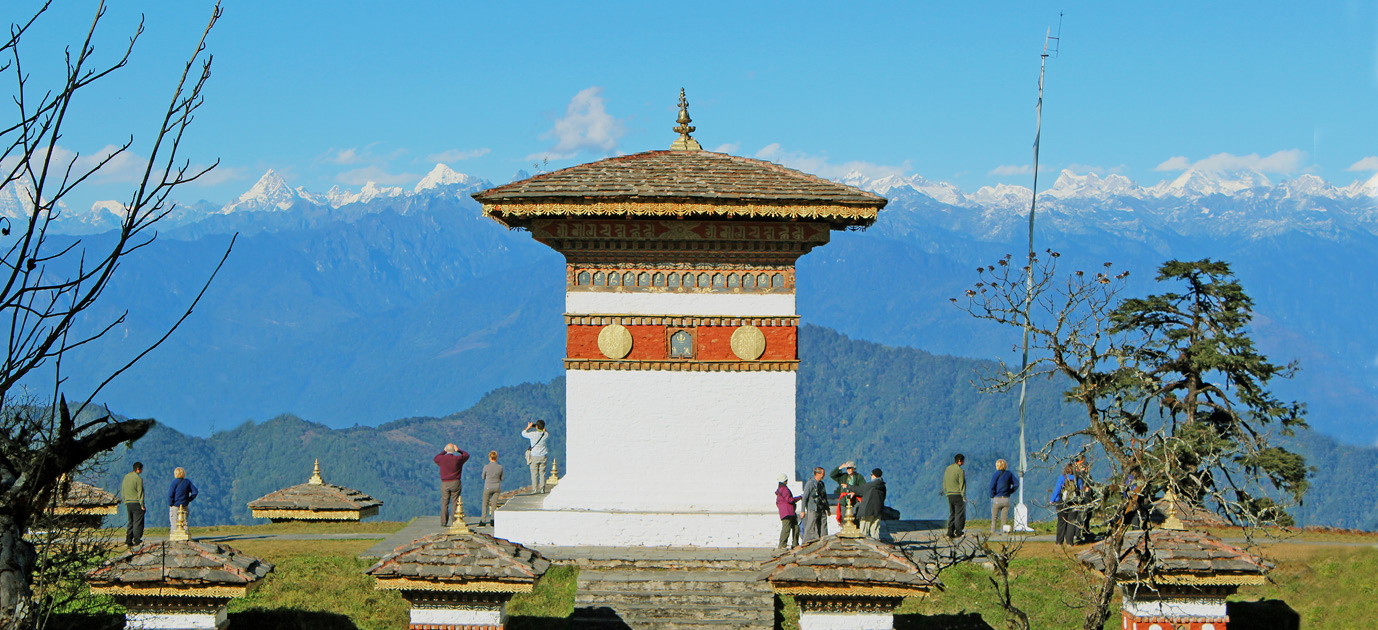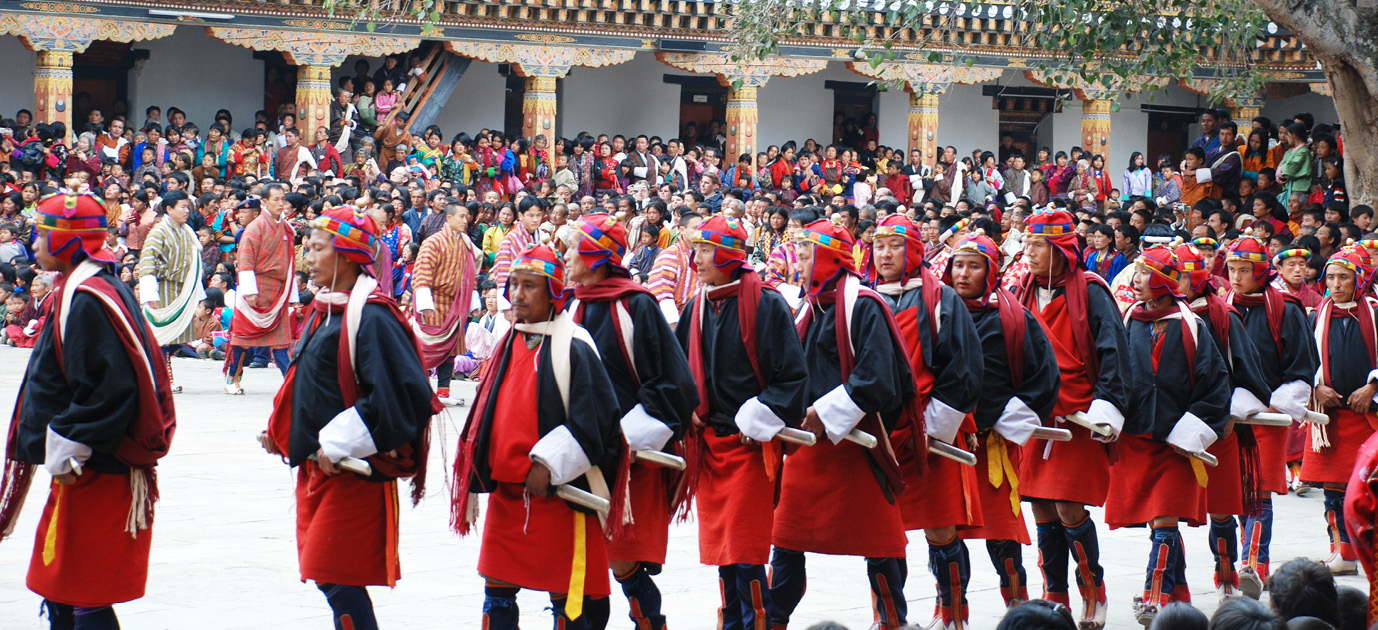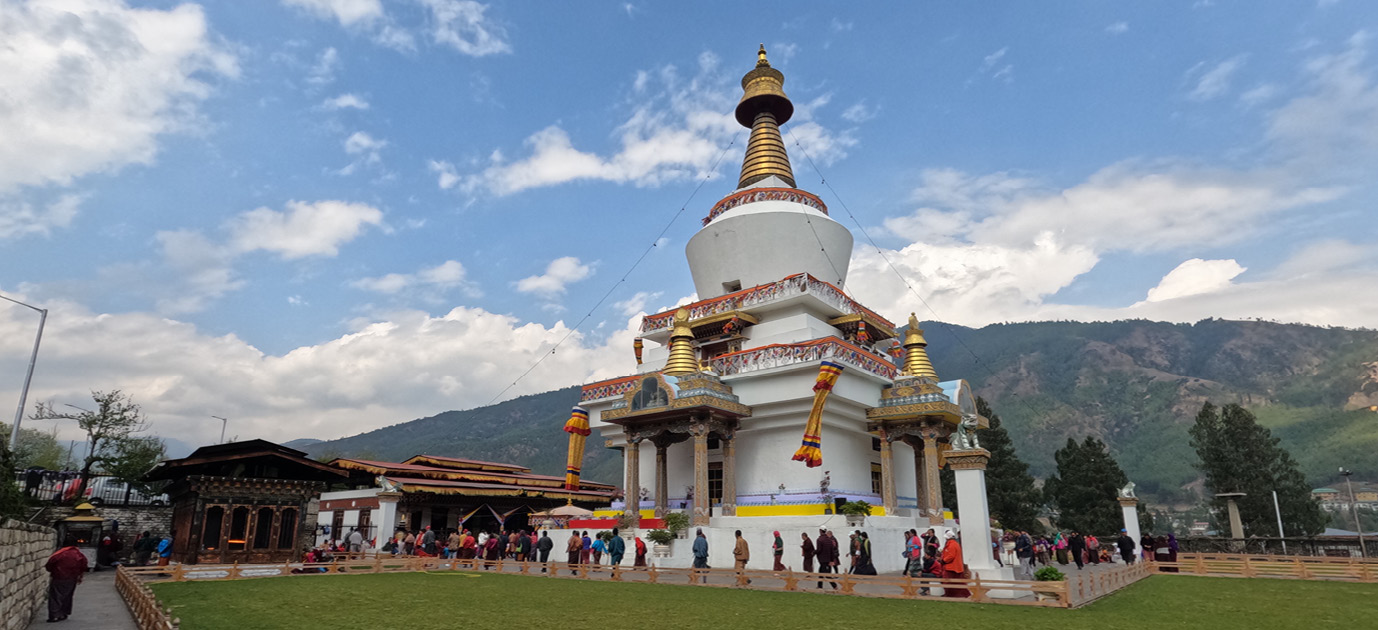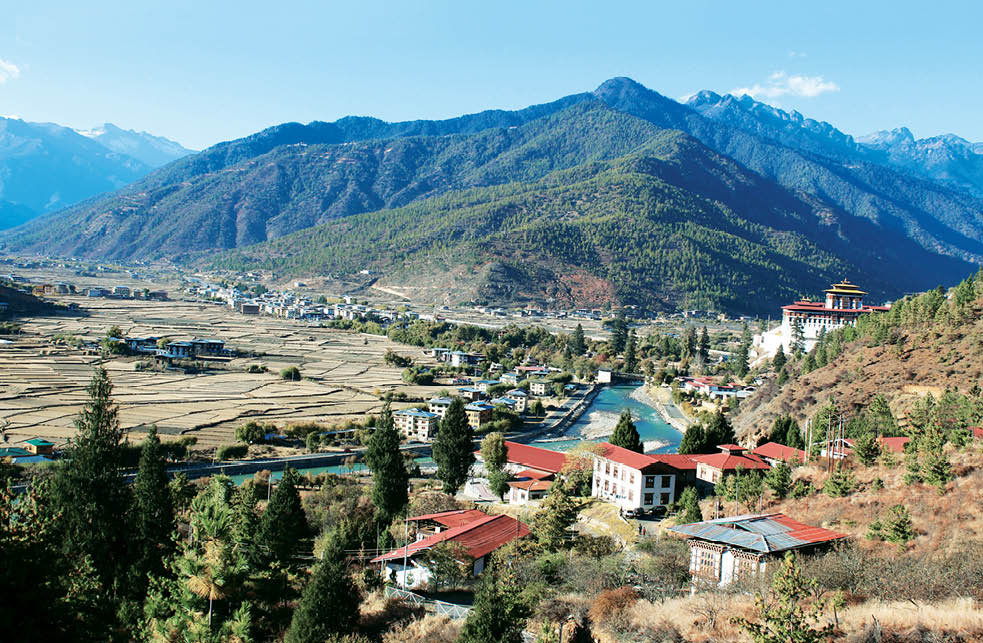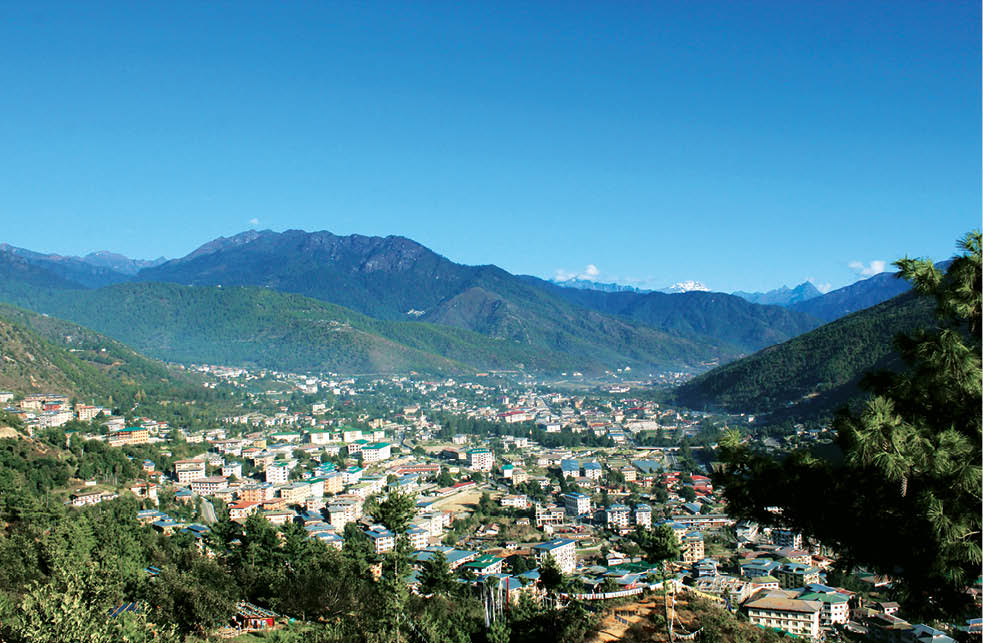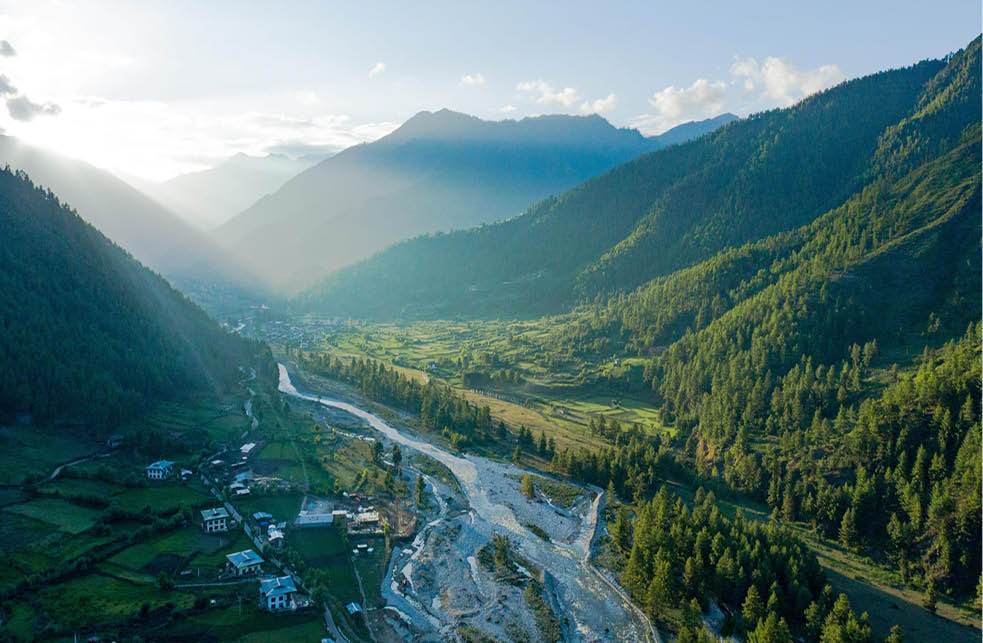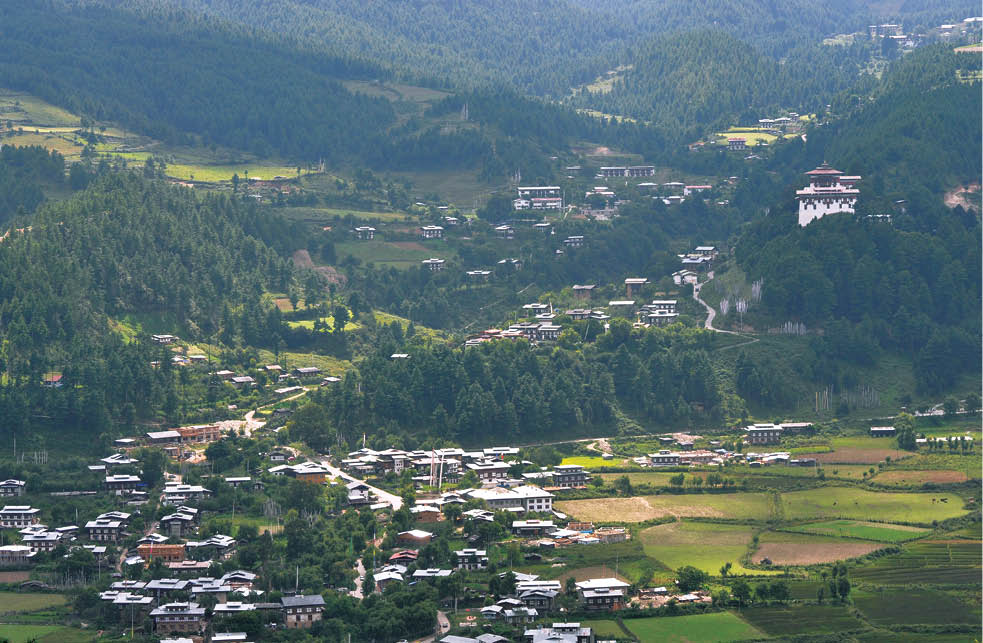


9 DAYS PUNAKHA TSHECHU (festival)
Day 01: (Arrive Paro)
The flight to Paro is one of the most spectacular mountain flights in the world, with a constantly changing panorama of some of the highest mountains on earth. Our UBA representative will meet you at Paro airport. After lunch enjoy afternoon sightseeing around Paro, including a visit to the National Museum, Ta Dzong. This museum houses many religious relics, works of art and handicrafts offering a great orientation into Bhutan’s historical and cultural past. Next, visit the Rimpong Dzong to see the painting of the great saint Milarepa, considered as the master of meditation by the Bhutanese and believed to have attained enlightenment in a lifetime.
Dzong’s are large monasteries and district administrative centres, which were once strategic forts. Afterwards walk to the beautiful cantilever wooden bridge still in use. Overnight at your hotel in Paro.
Day 02: (Paro)
After breakfast hike to Taktsang Monastery. The trail is broad and the walk of approximately 1.5 to 2 hours uphill takes you high above the Paro valley. The view of Taktsang Monastery built on a sheer cliff face 900 metres above the valley floor is a spectacular sight. The great Guru Rimpoche is said to have flown here on the back of a tigress when he brought the teachings of the Buddhist Dharma to Bhutan in the 8th Century. Nearby there is a teahouse where you can stop for lunch.
In the afternoon drive to the almost fully reconstructed Drukgyel Dzong. The original monument (destroyed by fire in 1951) was built by Shabdrung to commemorate his victory against invading Tibetans in 1644. In fine weather the towering peak of the sacred Mount Jomolhari (7314m) appears as a stunning backdrop. On the return drive to Paro, visit other sights in Paro valley. Overnight at your hotel in Paro.
Day 03: (Paro – Punakha)
Drive over the Dochu-La pass (3,100 meters), which on a clear day offers an incredible view of Himalayan peaks before descending into balmy Punakha valley (about 4 hrs total driving time). The drive through the countryside affords a glimpse of everyday life in this most remote of Himalayan kingdoms. In the Dochu-La area there are vast Rhododendron forests that grow to tree size and bloom in late April/early May covering the mountains in a riot of glorious spring colour.
Punakha was the ancient capital of Bhutan. On arrival, drive to Punakha Dzong, the “Palace of Great Happiness” to attend the festival. You will see locals dressed in their finest clothes who have walked from miles around to attend the festivities. They come to watch masked dances, to pray, and to feast. While the underlying purpose of the festival is spiritual, dances are more often like plays, telling stories where good triumphs over evil, or depicting significant historical events, especially surrounding the life of Bhutan’s patron saint, Padmasambhava (also known as Guru Rinpoche). There is inevitably a great deal of socialising as well.
Built in 1637 by the Shabdrung, the ‘Unifier of Bhutan’, Punakha Dzong is situated at the confluence of the Mo Chu and Pho Chu (Mother and Father Rivers). It is the winter headquarters of the Je Khenpo and hundreds of monks who move en masse from Thimphu to this warmer location. The three story main temple of the Punakha Dzong is a breathtaking example of traditional architecture with four intricately embossed entrance pillars crafted from cypress and decorated in gold and silver. It was here in 1907 that Bhutan’s first king was crowned.
Day 04: (Punakha Festival)
Morning at Punakha dzong to witness Punakha Tsechu (festival). Punakha festival was introduced in 2005 by Ministry of Home & Culture Affairs as per request made by Punakha district Administration and local people to preserve Buddhist teachings and to keep alive the noble deeds of Zhabdrung Ngwang Namgyal, the person who unified Bhutan and built Dzongs in Bhutan and also introduced monastic school in the country. The festival’s masked dances are performed by monks clad in colorful brocade attire and permeated by chants and reading of Buddhist scripts.
After lunch take a short walk to Chimi Lhakhang, temple of the Drukpa Kuenly who is also known as the Divine Madman. He inherited the Divine Madman title since he revolted against the orthodox Buddhism in his time. He taught the people that religion is an inner feeling and it’s not necessary that one should be an ordained monk. He is also considered a symbol of fertility and most childless couples go to his temple for blessing. Overnight at your hotel in Punakha.
Day 05: (Punakha – Phobjikha Valley)
Transfer to Phobjikha Valley (3 hrs) via the bustling market town of Wangduephodrang. Drive up a winding mountain road through oak and rhododendron forests, and over a high pass down into the picturesque Phobjikha Valley. Phobjikha is one of Bhutan’s few glacial valleys, and chosen winter home of black necked cranes (November – March) migrating from the Tibetan plateau. After lunch visit the Phobjikha Sanctuary to view the majestic black necked cranes (Nov-Mar only) and Gangtey Gompa (Monastery), dating back to the 16th century. Overnight at your hotel in Phobjikha.
Day 06: (Phobjikha – Thimphu)
Morning go for walk and meet the School children close to your hotel, who all walk for hours to reach their nearest school. Phobjikha is a paradise for nature lovers and hikers. There are lots of great places for hikes around the valley. Visit Gangtey monastery, the richly renovated monastery offering rich architecture and paintings. Walk down to the valley through the village. After lunch drive back to Thimphu crossing over Dochula pass again. Overnight at your hotel in Thimphu.
Day 07: (Thimphu)
Once a rustic village sitting in a broad, fertile river valley, Thimphu is today the nation’s bustling capital. Enjoy a full day of sightseeing, including a visit to the National Memorial Chorten depicting the Buddhist faith in the form of paintings and statues. This temple was first initiated by the Third King as a protection from the negative elements of modernisation, and as a monument to world peace. The Royal Queen Mother completed it as a memorial stupa for the Third King who passed away in 1972. Continue on to 12th century Changangkha Temple and Drubthob monastery housing the Zilukha Nunnery. If there is time, you may visit the nursing pen for the Takin, the national animal of Bhutan, and Tashichhodzong, ‘the fortress of the glorious religion’. Initially erected in 1641 by Shabdrung Ngawang Namgyal, it was rebuilt in the 1960s during the reign of Bhutan’s third king in the traditional style, without plans or nails. Tashichhodzong houses some ministries, His Majesty’s secretariat, and the central monk body.
If your visit to Thimphu coincides with the weekend, you can walk through the Thimphu Market to see the variety of food of Bhutan, including basket upon basket of fiery chillies, fresh cheese and a variety of fresh greens. In addition, many stalls contain Bhutanese handicrafts and household items. (This market is open only from Friday until mid-Sunday). Overnight at your hotel in Thimphu.
Day 08: (Thimphu – Paro)
Continue sightseeing in Thimphu. Visit the School for Arts and Crafts where students are taught the 13 types of Bhutanese art, The National Library housing the collection of Bhutanese scriptures dating back to the 8th century, the Traditional Paper Factory displaying the Bhutanese paper making process, and a fascinating replica of a medieval farmhouse at the Folk Heritage Museum.
Other options for the morning include a hike to Tango and Cheri Monasteries (45 mins), two of the most ancient monasteries in the Thimphu region or a hike to Phajoding Monastery providing a splendid view of Thimphu valley.
Late afternoon transfer to Paro. Overnight at your hotel in Paro.
Day 09: (Depart Paro)
Breakfast in the hotel, then drive to the airport for flight to your onward destination.
Tashi Delek!

